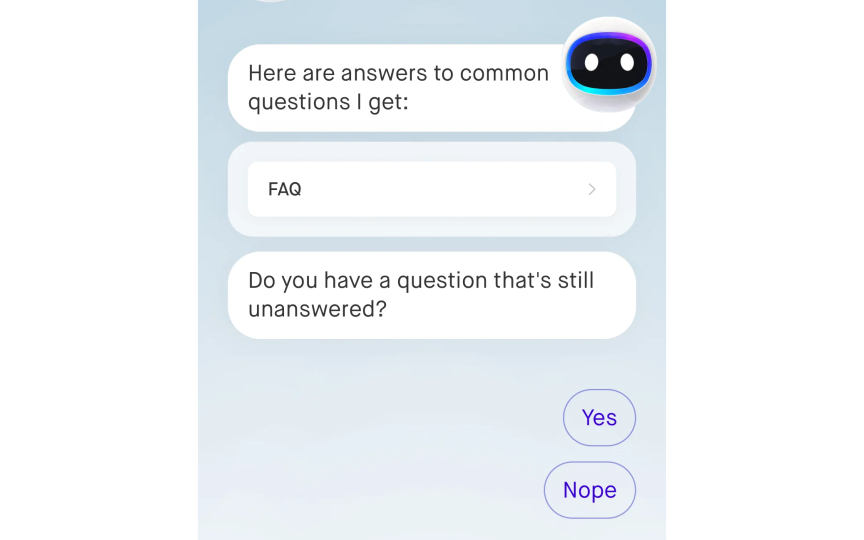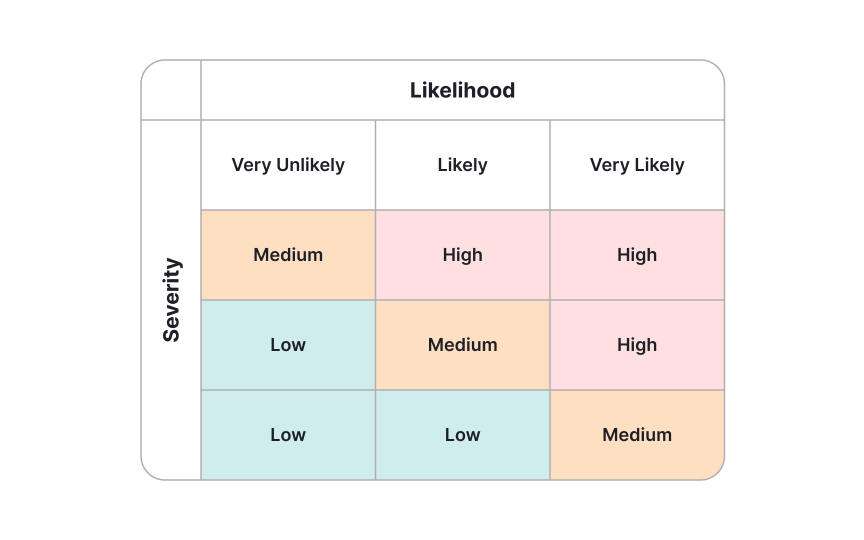Measuring AI UX Success & Governance
Implement measurement frameworks, governance processes, and compliance guidelines for responsible AI experiences.
AI experiences need different measurement approaches than traditional interfaces. Leading indicators like feedback rates and confidence scores show immediate issues. Lagging metrics like retention reveal long-term value creation. When these metrics align with regulatory requirements, organizations build AI systems that work well and responsibly. UX research can be directly integrated into machine learning pipelines. This creates a feedback loop where real user insights shape how models evolve. Instead of keeping user testing separate from technical development, this approach ensures AI systems improve based on actual human experiences.
The regulatory landscape adds another critical dimension to AI governance. GDPR transparency requirements and AI Act risk categories directly influence design decisions. These range from how data collection is presented to what controls users need for high-risk systems. Living styleguides connect technical, regulatory, and user experience concerns. These evolving frameworks capture AI personality traits, interaction patterns, and ethical boundaries. They guide cross-functional teams toward consistent experiences. By combining measurement, research integration, regulatory compliance, and consistent governance, organizations create AI experiences that deliver value while maintaining user trust.
Technical metrics like accuracy and processing speed tell us if an
Start by identifying your key user outcomes: are users completing tasks faster, making better decisions, or feeling more confident? Then work backward to connect these outcomes with specific AI behaviors and technical metrics. For example, if your AI assistant aims to reduce support tickets, track not just query understanding accuracy but also resolution rates and follow-up questions. Organizations should establish clear baselines before launch by testing with representative users. Create dashboards that visualize relationships between technical performance and user value metrics, making these connections visible to both technical and design teams.
Leading indicators serve as early warning systems for
Feedback signals reveal explicit user reactions to AI performance:
- Correction rates show how often users override or modify AI outputs
- Help requests indicate when users feel stuck or confused
- Manual overrides demonstrate lack of trust in automated suggestions
- Feedback patterns across different user segments highlight where specific groups struggle
Confidence metrics measure perceived reliability rather than actual performance:
- Trust ratings reveal whether users believe AI recommendations
- Reliability scores show if users count on the system for important tasks
- Confidence ratings indicate whether users feel certain about AI outputs
- The gap between perceived and actual performance highlights communication issues
Interaction patterns show how users actually engage with AI features:
- Completion rates reveal whether users follow through with AI suggestions
- Abandonment points identify where users lose confidence in the system
- Recovery behaviors demonstrate resilience after errors occur
- Usage frequency indicates overall value perception
Organizations should establish baseline expectations for these indicators and create
Lagging indicators measure the ultimate success of
Adoption metrics reveal sustained engagement beyond initial novelty:
- Retention rates show whether users continue returning to AI features
- Feature usage frequency tracks how often users choose AI-powered options
- Subscription renewals indicate a willingness to continue paying for AI value
- Adoption across different user segments highlights universal vs. niche appeal
Business impact metrics connect AI experiences to organizational goals:
- Conversion rate changes demonstrate influence on purchase decisions
- Task completion efficiency gains show productivity improvements
- Support cost reductions reveal decreased need for human assistance
- Revenue per user differences between AI adopters and non-adopters
User proficiency metrics track evolving relationships with AI:
- Decreased reliance on guidance indicates growing user confidence
- Increased usage of advanced features shows deepening engagement
- Growing comfort with AI-human collaboration reveals trust development
- Reduction in error rates demonstrates improved mutual understanding
Predictive correlations link early signals to long-term outcomes:
- Relationships between specific leading indicators and lagging results
- Predictive models that forecast long-term performance from early signals
- Identified thresholds where leading indicators reliably predict outcomes
- Longitudinal patterns showing how indicators evolve throughout the product lifecycle
- Voice principles that define AI personality, tone, and communication style across contexts
- Response policies outline appropriate boundaries for content generation, information handling, and user
interaction patterns - Ethical boundaries clarify where the AI should decline requests, acknowledge limitations, or escalate to human review
Organizations should establish formal governance processes to review and update these style guides regularly. Changes might reflect new capabilities, emerging ethical considerations, or evolving user expectations. Cross-functional consensus ensures style guides incorporate diverse perspectives, including design, engineering,
Traditional
- Research methods tailored for AI evaluation: Contextual inquiry reveals how AI fits into workflows, while targeted evaluations assess specific model capabilities. Clear protocols should distinguish between interface issues and model limitations.
- Automated data collection in user journeys: Instrumented products capture natural interactions without research session constraints. These behavioral signals reveal actual usage patterns, highlighting challenge areas without requiring separate studies.
- User feedback interfaces within products: Simple rating systems, correction mechanisms, and explanation options create valuable feedback loops. These interfaces should feel like natural extensions of the experience rather than burdensome research tasks.
- Parallel testing of models and interfaces: A/B testing should evaluate both model variations and interface approaches simultaneously. This reveals how technical and experiential factors interact to create the overall impact.
Pro Tip: Design feedback mechanisms that improve the user experience while simultaneously gathering data that can train better models.
Effective
- Dual-purpose feedback mechanisms: Well-designed interfaces serve both users and models simultaneously. When a language model mistranslates text, a good correction interface lets users edit the translation directly. This immediately fixes their current problem while also generating a valuable training example that shows the correct translation paired with the original text.
- Research-to-development handoffs: Create clear processes for translating
research insights into model improvements. When user research reveals people struggle with financial terminology in an AI assistant, establish workflows to prioritize these improvements in the next training cycle with explicit ownership assignments. - Governed update processes: Establish guidelines determining when user feedback triggers model updates. Balance improvement speed against quality control, ensuring that widespread confusion with a feature triggers rapid response while isolated issues undergo more thorough validation.
- Impact transparency: Show users how their feedback influences the system. This builds trust and encourages continued participation in improvement processes.
Pro Tip: Show users how their feedback improves the system with messages like "Thanks to user feedback, we've improved this feature by 15% this month.”
Regulatory frameworks increasingly shape how organizations design
- GDPR fundamentals for AI design: The GDPR establishes key principles affecting AI design, including purpose limitation, data minimization, and transparency requirements. For example, purpose limitation requires that personal data collected for one purpose cannot be repurposed for incompatible uses without appropriate safeguards. Data minimization means AI systems should use only necessary data for their function, which may require pseudonymization techniques.[1]
- EU AI Act risk classification system: The EU AI Act introduces a risk-based approach with specific categories. "Unacceptable risk" systems, like social scoring AI, are banned outright. "High-risk" AI systems in areas like education, employment, and law enforcement require human oversight, transparency, and robustness. Even systems not classified as high-risk must comply with transparency requirements, especially when they interact directly with humans.[2]
- Cross-industry compliance integration: Different sectors face additional requirements beyond general regulations. Organizations must integrate these diverse requirements into coherent design approaches. This requires close collaboration between legal, design, and technical teams to create experiences that satisfy regulatory requirements without compromising
user experience .
Pro Tip: Create a compliance checklist for each major regulatory framework that translates legal requirements into specific design considerations.
Documenting
- Model cards for clear communication: Model cards are simple, standardized documents that explain AI systems to non-technical people. They describe what the AI does, how it was built, and where it might make mistakes. For example, a model card for a recommendation system would explain what data trained it, what types of items it recommends well, and where it struggles. Google, Microsoft, and other major AI developers have adopted this practice to increase transparency.[3]
- Data documentation approaches: Organizations should clearly document what information was used to build AI systems. This includes explaining data sources, collection methods, and known limitations. For instance, a speech recognition system trained primarily on American English speakers should document this potential bias toward certain accents. This transparency helps identify issues before they affect users.
- Version tracking for AI evolution: Teams should maintain clear records of how AI behavior changes over time. This includes documenting what changed between versions, why changes were made, and how performance metrics shifted. This creates accountability for system evolution and helps explain behavior changes to users who might notice differences.
Effective risk assessment helps teams identify potential
Create a simple 3×3 matrix rating each risk on severity (minor/moderate/major) and likelihood (rare/possible/likely). This focuses attention on high-severity, high-likelihood issues needing immediate action. For an e-commerce recommendation AI: "Recommending out-of-stock products" might be high-likelihood/middle-severity, "Showing inappropriate products to minors" could be low-likelihood/high-severity, and "Consistently recommending more expensive alternatives" might be moderate-likelihood/moderate-severity.
Develop specific countermeasures for priority risks. Technical safeguards might include content filters or confidence thresholds. Policy measures could involve human review requirements. For instance, if your
Good governance starts with clearly deciding who can make what decisions about the AI system. Spell out who can approve features, set boundaries, or make changes. Make sure the right experts have authority while keeping clear who is responsible for outcomes.
Set up clear approval steps for:
- New AI features being launched
- Major changes to how the AI works
- Features that might affect vulnerable users
Create ways for team members to report concerns safely. People should feel comfortable raising issues without worry. Keep records of these concerns and how they were fixed to help future teams.
Include different viewpoints in decision-making groups. Mix technical experts with ethics specialists, lawyers, and subject experts. Bring in both team members and outside voices to avoid one-sided thinking.
Match the level of review to the level of risk. High-risk features need careful review, while simpler, safer features can move through faster approvals.
References
- EU AI Act: first regulation on artificial intelligence | Topics | European Parliament | Topics | European Parliament
Top contributors
Topics
From Course
Share
Similar lessons

AI’s Role in Text Generation and Modification

Best Practices and Potential Pitfalls of AI Writing Tools




















